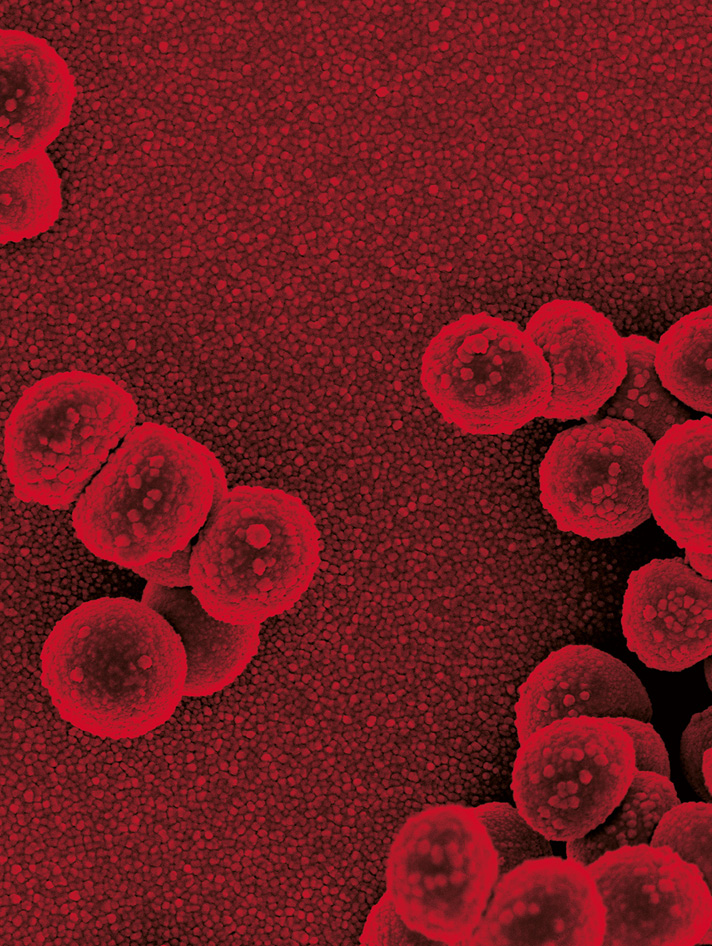 -
Volume 67,
Issue 12,
2018
-
Volume 67,
Issue 12,
2018
Volume 67, Issue 12, 2018
- Prevention and Therapy
-
-
-
Evaluation of fast-acting bactericidal activity and substantivity of an antiseptic agent, olanexidine gluconate, using an ex vivo skin model
More LessPurpose. We assessed the fast-acting bactericidal activity and substantivity of olanexidine gluconate (OLG) to investigate its remaining bactericidal activity on the skin after rinsing and drying by using an ex vivo Yucatan micropig (YMP) skin model.
Methodology. The fast-acting bactericidal activity was evaluated in pigskin models inoculated with methicillin-resistant Staphylococcus aureus (MRSA), Staphylococcus epidermidis, vancomycin-resistant Enterococcus faecalis (VRE), Acinetobacter baumannii, Corynebacterium minutissimum and Cutibacterium acnes. To evaluate substantivity, the YMP skin piece first had 1.5 % OLG, chlorhexidine gluconate (CHG) formulations or 10 % povidone–iodine (PVP-I) applied to it, and was then rinsed with distilled water, incubated for 4, 6, 8 or 12 h and inoculated with the test bacteria (MRSA, S. epidermidis and VRE). The viable bacteria remaining at 1 min of exposure of bacteria were counted to measure the quantity of antiseptic molecules retaining bactericidal activity. To determine the factors contributing to the substantivity, the stratum corneum (SC) of the YMP skin that had had OLG or CHG applied to it was exfoliated using a tape-stripping method and the amount of antiseptic was quantitated.
Results. OLG showed a fast-acting bactericidal activity that was similar to or stronger than that of CHG formulations up to a concentration of 1 % and PVP-I with a short exposure time of 30 s, and substantivity until 12 h after rinsing, whereas the other antiseptics hardly showed any substantivity. There was 2.8 times or more OLG in the SC than CHG.
Conclusion. OLG has fast-acting activity and substantivity, which are required properties for an antiseptic, and is useful for preventing infections.
-
-
Volumes and issues
-
Volume 73 (2024)
-
Volume 72 (2023 - 2024)
-
Volume 71 (2022)
-
Volume 70 (2021)
-
Volume 69 (2020)
-
Volume 68 (2019)
-
Volume 67 (2018)
-
Volume 66 (2017)
-
Volume 65 (2016)
-
Volume 64 (2015)
-
Volume 63 (2014)
-
Volume 62 (2013)
-
Volume 61 (2012)
-
Volume 60 (2011)
-
Volume 59 (2010)
-
Volume 58 (2009)
-
Volume 57 (2008)
-
Volume 56 (2007)
-
Volume 55 (2006)
-
Volume 54 (2005)
-
Volume 53 (2004)
-
Volume 52 (2003)
-
Volume 51 (2002)
-
Volume 50 (2001)
-
Volume 49 (2000)
-
Volume 48 (1999)
-
Volume 47 (1998)
-
Volume 46 (1997)
-
Volume 45 (1996)
-
Volume 44 (1996)
-
Volume 43 (1995)
-
Volume 42 (1995)
-
Volume 41 (1994)
-
Volume 40 (1994)
-
Volume 39 (1993)
-
Volume 38 (1993)
-
Volume 37 (1992)
-
Volume 36 (1992)
-
Volume 35 (1991)
-
Volume 34 (1991)
-
Volume 33 (1990)
-
Volume 32 (1990)
-
Volume 31 (1990)
-
Volume 30 (1989)
-
Volume 29 (1989)
-
Volume 28 (1989)
-
Volume 27 (1988)
-
Volume 26 (1988)
-
Volume 25 (1988)
-
Volume 24 (1987)
-
Volume 23 (1987)
-
Volume 22 (1986)
-
Volume 21 (1986)
-
Volume 20 (1985)
-
Volume 19 (1985)
-
Volume 18 (1984)
-
Volume 17 (1984)
-
Volume 16 (1983)
-
Volume 15 (1982)
-
Volume 14 (1981)
-
Volume 13 (1980)
-
Volume 12 (1979)
-
Volume 11 (1978)
-
Volume 10 (1977)
-
Volume 9 (1976)
-
Volume 8 (1975)
-
Volume 7 (1974)
-
Volume 6 (1973)
-
Volume 5 (1972)
-
Volume 4 (1971)
-
Volume 3 (1970)
-
Volume 2 (1969)
-
Volume 1 (1968)
Most Read This Month


